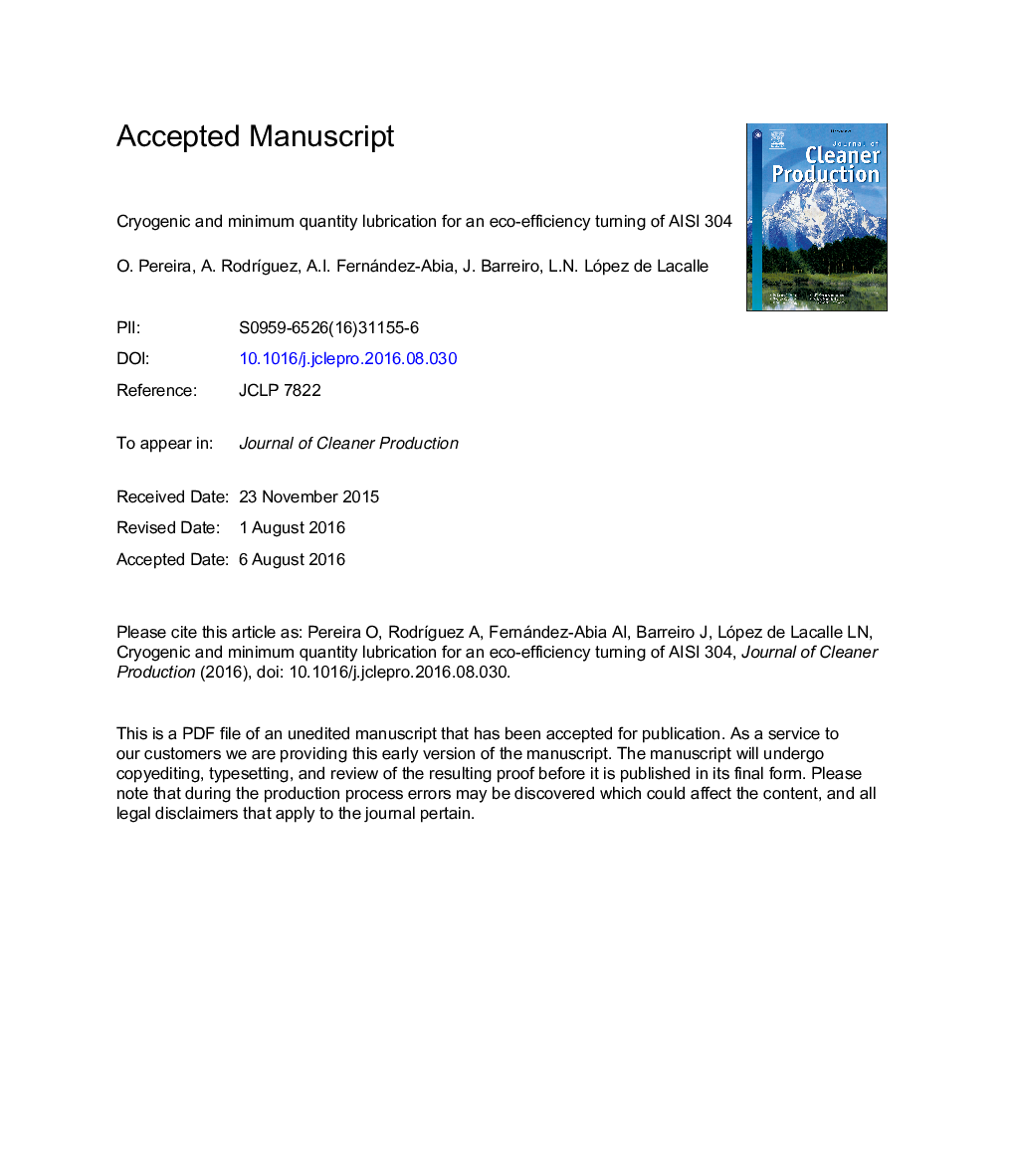| Article ID | Journal | Published Year | Pages | File Type |
|---|---|---|---|---|
| 8100578 | Journal of Cleaner Production | 2016 | 36 Pages |
Abstract
In recent years, the need for more efficient machining processes has notably increased, both in terms of productivity and eco-efficiency. In this paper, the use of combined techniques based on cryogenic cooling and minimum quantity of lubrication is proposed and compared with other near-to-dry coolant alternatives. To evaluate the success of the proposed technique, technical feasibility on the one hand and ecological footprint on the other should be analyzed. Results show that this combined solution implies a tool life improvement (more than 50%) and the possibility of increasing the cutting speed (more than 30%) comparing with dry machining. Moreover, cutting forces and surface integrity are maintained or even improved in comparison with conventional techniques. From an ecological point of view, a life cycle assessment was performed providing a comparison of the different alternatives proposed. Results show that the combination of cryogenic and minimum quantity of lubrication techniques is the key to success, reaching a balance between technical and environmental issues. Stand-alone systems (no combined ones) do not provide a complete solution. Cooling without lubrication or vice versa is not enough when machining these materials.
Related Topics
Physical Sciences and Engineering
Energy
Renewable Energy, Sustainability and the Environment
Authors
O. Pereira, A. RodrÃguez, A.I. Fernández-Abia, J. Barreiro, L.N. López de Lacalle,
